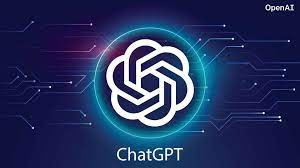ChatGPT: Revolutionizing Conversational AI
Introduction:
In the ever-evolving landscape of artificial intelligence, one of the most groundbreaking developments has been the advent of conversational AI models. Among these, ChatGPT, developed by OpenAI, has emerged as a frontrunner, showcasing the capabilities of large language models in generating human-like text responses. As we delve into the intricacies of ChatGPT, it becomes apparent that this technology is transforming the way we interact with machines, making conversations more natural and engaging.
Understanding ChatGPT:
ChatGPT is built upon OpenAI's GPT (Generative Pre-trained Transformer) architecture, specifically GPT-3.5. Trained on vast amounts of diverse data, ChatGPT has learned to understand context, nuances, and linguistic patterns, allowing it to generate coherent and contextually relevant responses in natural language. This powerful language model has become a cornerstone in the field of natural language processing, facilitating applications in various domains.
Conversational Applications:
ChatGPT has also found applications in content creation, aiding writers, marketers, and content creators in generating creative and contextually appropriate text. From drafting emails to brainstorming ideas, the versatility of ChatGPT in generating human-like text has made it an indispensable tool for various professionals.
Enhancing Human-Machine Interactions:
The significance of ChatGPT lies in its ability to bridge the gap between human and machine communication. By making interactions more conversational and natural, ChatGPT contributes to reducing the learning curve associated with interacting with AI systems. This, in turn, broadens the accessibility of technology and empowers users to harness the potential of AI in a seamless manner.
However, it's important to note that while ChatGPT excels in generating human-like text, it is not without limitations. There are instances where the model may produce responses that lack context or exhibit biased behavior, reflecting the importance of ongoing research and development to enhance the model's capabilities further.
Ethical Considerations:
As AI models like ChatGPT become more integrated into our daily lives, ethical considerations come to the forefront. OpenAI has been actively working on addressing concerns related to bias, misinformation, and misuse of AI technologies. Striking a balance between innovation and responsibility is crucial to ensure that AI benefits society at large without perpetuating harmful practices.
Conclusion:
ChatGPT stands at the forefront of conversational AI, showcasing the tremendous potential of large language models in transforming the way we communicate with machines. As this technology continues to evolve, it opens up new possibilities for more natural, intuitive, and context-aware interactions. As we navigate the future of AI, it is imperative to approach its development and deployment with a commitment to ethical considerations, ensuring that these technologies positively impact individuals and society as a whole.





OWSUM
ReplyDelete